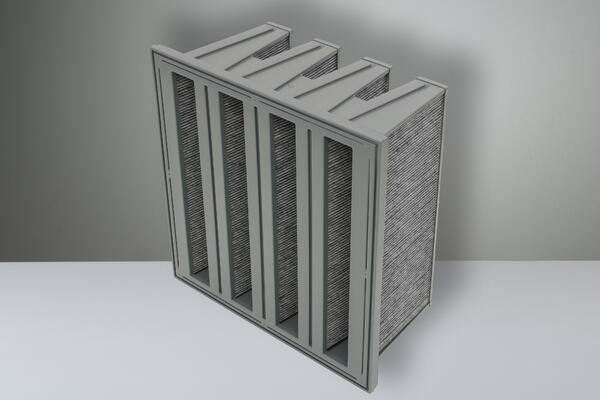
Test methods for assessing the performance of gas-phase air cleaning media and devices for general ventilation — Part 3: Classification system for GPACDs applied to treatment of outdoor air
In 2019, according to the WHO, 99% of the world's population lived in conditions that did not meet air quality guidelines.1 In 2021, the WHO air quality guideline was revised. As a result, stricter limits for outdoor air and indoor air requirements are recommended.2 This is because the risks from air pollution are now considered to be the greatest threat to human health.3 Pollutant gases are also coming under increased scrutiny.
Almost at the same time the ISO 10121 test standard for activated carbon filters also got an update! The third part of the standards series has been active since 2022 and introduces a new classification system for activated carbon filters, which we will examine in more detail below.
1 Cf. Velasco, R. et al (2022): P. 2.
2 Cf. WHO (2021a): P. 8.
3 Cf. WHO(2021b): P. XIV.

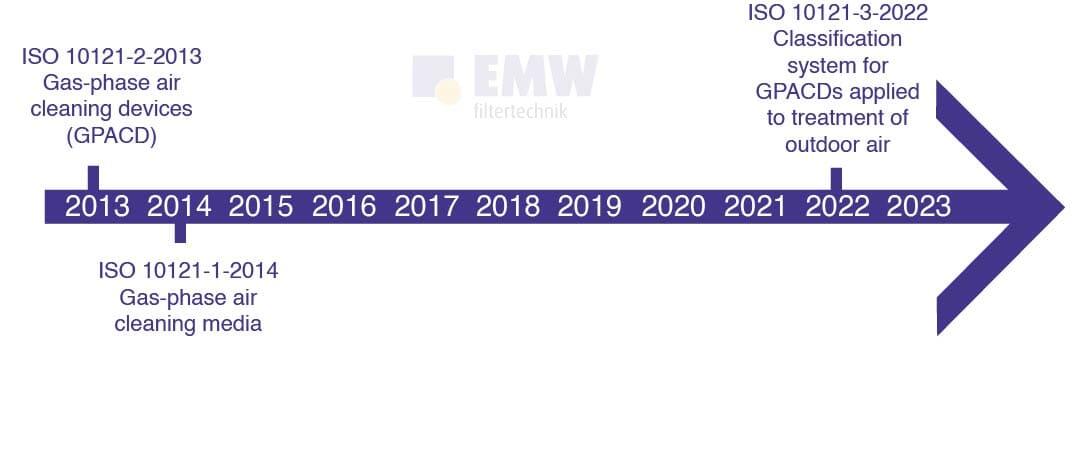
Fig.1: Historical development of the ISO 10121 test standard
The ISO 10121 test standard consists of three parts for determining the performance of media and devices for cleaning gas phases for general ventilation. Part 1 was published in 2014. Here, ISO 10121-1:2014 describes a test procedure for three different types of filter media for cleaning gas phases.4 Part 2 was already published in 2013. ISO 10121-2:2013 deals with the necessary equipment for gas phase cleaning.5
Since 2022, Part 3 has completed the series of standards. The ISO 10121-3 test standard specifies requirements and test methods for gas-phase air cleaning devices for use in ventilation and air conditioning systems. In addition, ISO 10121-3:2022 introduces for the first time a separate classification system for molecular filters or gas phase air cleaning devices (GPACD).6
4 Cf. DIN EN ISO 10121-1 (2014): P. 5.
5 Cf. DIN EN ISO 10121-2 (2013): P. 5.
6 Cf. ISO 10121-3 (2022): P. 1.
To simulate the performance of an activated carbon filter, different gases are used during the test procedure. The molecular filter test is performed in accordance with ISO 10121-3 using the test gases ozone (O3), sulfur dioxide (SO2), nitrogen dioxide (NO2), and toluene (C7H8).
Not to be confused with ozone in the higher atmosphere, ozone refers to ozone produced on the ground. For example, one of the most common sources of ozone is summer smog, which is formed by reactions between gases and sunlight. The WHO air quality line indicates a maximum limit of 60 µg/m³ as an average concentration over a six-month period.7
7 Cf. WHO (2021a): P. 5-6.

Nitrogen dioxide is mainly produced by the combustion of fuels in traffic, transport, and industry. The WHO recommended limit is an average concentration of no more than 10 µg/m³ per year.8
8 Cf. WHO (2021a): P. 5-6.
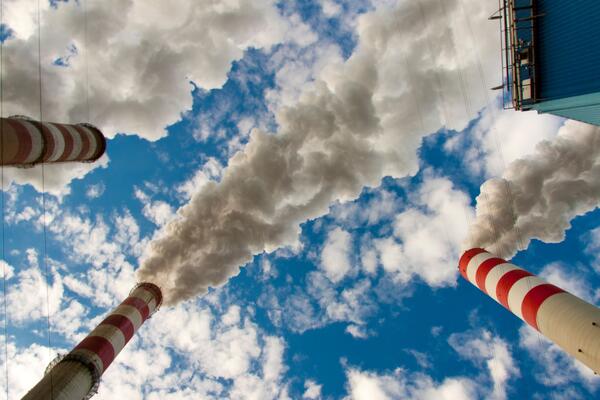
Sulfur dioxide is a strong smelling, colorless gas. SO2 is released during the combustion of fuels such as oil and coal, or when sulfur-containing mineral ores are melted. The WHO guideline for air quality recommends an average daily concentration of no more than 40 µg/m³.9
9 Cf. WHO (2021a). P. 5-6.
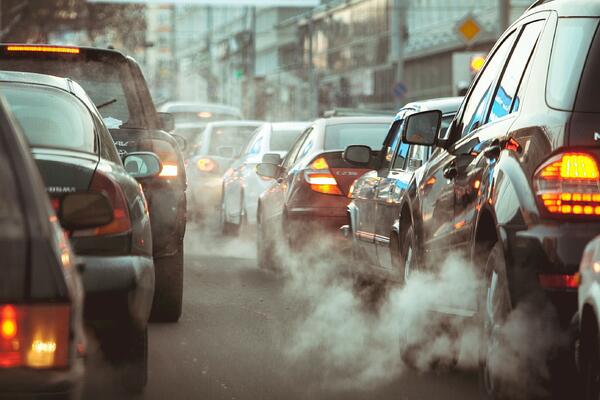
| Pollutant | Averaging Time | 2021 AQG *-Level |
| O3 | Peak season | 60 |
| 8-hour | 100 | |
| NO2 | Annual | 10 |
| 24-hour | 25 | |
| SO2 | ||
| 24-hour | 40 | |
AGQs= Air Quality Guideline
Source: WHO 2021a: p. 135.
Fig. 2: Recommended limit values of the WHO air quality guideline
Toluene is used as a reference gas for volatile organic compounds (VOCs) according to ISO 10121-3. VOCs are organic chemical compounds whose composition allows them to evaporate under normal indoor conditions, i.e. at normal room temperature and atmospheric pressure. Natural sources are mainly found in vegetation such as forests, oceans, etc. Anthropogenic sources, on the other hand, are caused by transportation and industrial processes.10
10 Cf. Parvin, Mitali et al (2016): P. 101-103.
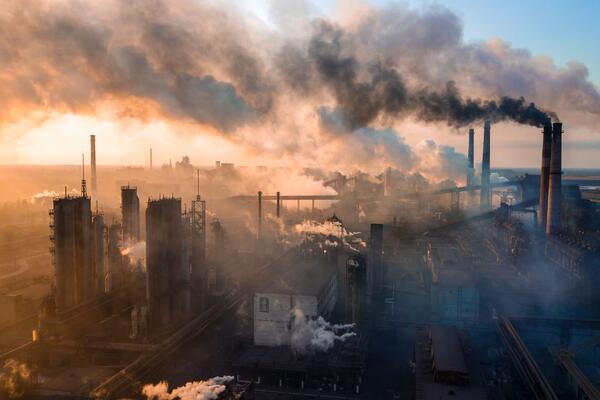
Activated carbon filters are ideal for adsorbing these harmful gases, as conventional air filters are inadequate for particle separation of these very small molecules. The adsorption performance of carbon filters depends on several factors. First, the concentration of contaminated air and the volume flow rate at the point of use must be evaluated. Humidity and temperature also affect adsorption performance. In manufacturing the appropriate molecular filter, an appropriate particle size of activated carbon must be selected and distributed throughout the filter media. Finally, the mobility of the carrier gas in an aerosol must be considered to achieve the desired adsorption performance.11
11 Vgl. IUTA (2021): P. 63.
For classification according to ISO 10121-3, the adsorption performance of an activated carbon filter is evaluated against the pollutant gases ozone (O3), sulfur dioxide (SO2), nitrogen dioxide (NO2) and toluene (C7H8). One activated carbon filter of identical design must be used for each pollutant gas so that the test result is not influenced by other substances.
During the test, the following classification characteristics are recorded:
The initial efficiency is obtained when the test gas passes through the test filter. The absorbed capacity of the pollutant gas is recorded as mass [g/m²] or as substance quantity [mol/m²] of test gas flowing through the activated carbon filter. In this context, the rankings recorded in terms of substance quantity are identical for all test gases at 1.5, 6 and 24.0, and each increases by a factor of 4 over the filter classes Light Duty (LD), Medium Duty (MD) or Heavy Duty (HD). In terms of mass, the ranking is also divided into Light, Medium and Heavy Duty. However, different molecular masses have to be taken into account for the gases, so that the values to be achieved differ depending on the test gas.12
| Gas |
mol/m² |
g/m² |
||||
| LD |
MD |
HD |
LD |
MD |
HD | |
| O3 | 1,5 | 6,0 | 24,0 | 72 | 288 | 1152 |
| NO2 | 1,5 | 6,0 | 24,0 | 96 | 384 | 1538 |
| SO2 | 1,5 | 6,0 | 24,0 | 69 | 276 | 1104 |
| Toluene | 1,5 | 6,0 | 24,0 | 138 | 553 | 2211 |
Source: ISO 10121-3:2022: P. 13.
Fig. 3: Filter classes according to ISO 10121
The efficiency of the test filter is recorded until the value falls below 50%. The test is then stopped and the final allocation to the performance grades Light Duty (LD), Medium Duty (MD) or Heavy Duty (HD) follows, as well as the allocation of the value according to the average efficiency, which is rounded down in 5% steps. For activated carbon filters with an efficiency ≤ 50%, the filter class very Light Duty (vLD) still exists.13
The recording of the initial pressure difference and final pressure difference according to ISO 10121-3 is recommended, but not mandatory, since the adsorption of pollutant gases hardly ever leads to a significant increase in the pressure difference of an activated carbon filter.
12 Cf. ISO 10121-3 (2022): P. 13.
13 Cf. ISO 10121-3 (2022): P. 8.
To better classify the new filter classes, a Medium Duty 90 (MD 90) activated carbon filter can be expected to last four times longer than its Light Duty 90 (LD 90) counterpart. The service life of a Heavy Duty 90 (HD 90) activated carbon filter is even 16 times longer than that of a Light Duty 90 (LD 90) activated carbon filter.
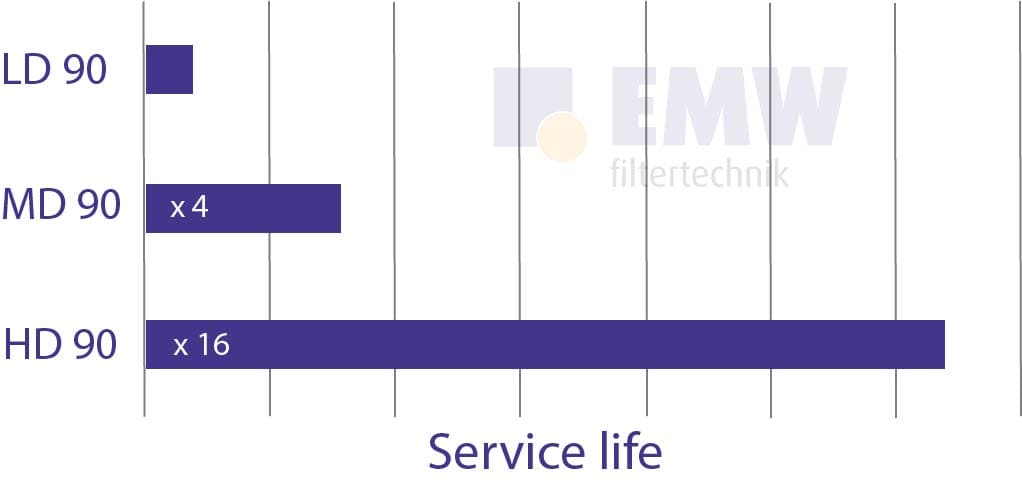
Fig. 4: Comparison of service life of activated carbon filters LD 90, MD 90 & HD 90
With the introduction of the ISO 10121-3:2022 test standard, a classification system for activated carbon filters has been established for the first time. Based on the filter classes, the adsorption performance for different gas phases can be determined. This should make it easier for the user to compare different activated carbon filters.
However, the possibility of a regenerative effect on the activated carbon is sometimes not considered. In addition, it must be taken into account that the gas phases are more concentrated during the test than is usually the case in indoor air. In addition, the comparability of the surrogate gas toluene must be considered in order to evaluate its significance in comparison to the adsorption performance of VOCs.14 According to a report by the Institute IUTA, toluene is certainly suitable as a reference gas, but it is advisable to perform the test with a specific gas phase if this is the focus depending on the application.15
The classification into the filter classes Light, Medium and Heavy Duty increases the information value regarding the possible service life of different activated carbon filters in real operation. Our team will be happy to assist you in selecting the right activated carbon filter with the right adsorption performance for your application.
14 Vgl. Ligotski, R. et al (2018): P. 467-474.
15 Vgl. IUTA (2021): P. 62.
How many parts of ISO 10121 are active today?
DIN EN ISO 10121-1 (2014): Methode zur Leistungsermittlung von Medien und Vorrichtungen zur Reinigung der Gasphase für die allgemeine Lüftung – Teil 1: Medien zur Reinigung der Gasphase (ISO 10121-1:2014); Deutsche Fassung EN ISO 10121-1:2014, P. 1-48.
DIN EN ISO 10121-2 (2013): Methode zur Leistungsermittlung von Medien und Vorrichtungen zur Reinigung der Gasphase für die allgemeine Lüftung – Teil 2: Einrichtungen zur Reinigung der Gasphase (GPACD) (ISO 10121-2:2013); Deutsche Fassung EN ISO 10121-2:2013, P. 1-50.
IUTA - Institut für Energie- und Umwelttechnik e.V. (2021): Verhalten von Adsorptionsfiltern und –medien für die Raumlufttechnik gegenüber innenraumrelevanten Schadstoffen währen der Betriebsdauer, in Innovationsreport 2021, Bereich Partikelprozesstechnik & Charakterisierung, P. 1-124.
ISO 10121-3 (2022): Test methods for assessing the performance of gas-phase air cleaning media and devices for general ventilation — Part 3: Classification system for GPACDs applied to treatment of outdoor air, P. 1-24.
Ligotski, R. / Sager, U. / Schmidt, F. (2018): Die Durchführung von Adsorptions-Filtertest gemäß DIN EN ISO 10121 – Teil 1: Adsorptionsversuche an Filtermedien, in Gefahrstoffe – Reinhaltung der Luft, 78, Nr. 11/12, P. 466- 474.
Parvin, Mitali / Van Langenhove, Herman / Walgraeve, Christophe / Do Hoai Duc (2016): Indoor-Outdoo Volatile Organix Compounds (VOCs) levels: The Case of Dhaka Urban and Industrial Area, Journal of Modern Science and Technology, Vol. 4, No. 1, September, P. 97-127.
Velasco, R. / Jarosinska, D. (2022): Update of the WHO global air quality guidlines: Sytematic reviews – An introduction, in: Environment International, 170, P. 1 - 6.
World Health Organization (2021a): Globale Luftgüteleitlinien der WHO – Feinstaubpartikel (PM2,5 und PM10), Ozon, Stickstoffdioxid, Schwefeldioxid und Kohlenmonoxid – Zusammenfassung, P. 1-10.
World Health Organization (2021b): WHO global air quality guidelines – Particulate matter (PM2,5 and PM10) ozone, nitrogen dioxide, sulfur dioxide and carbon monoxide, P. 1 – 273.